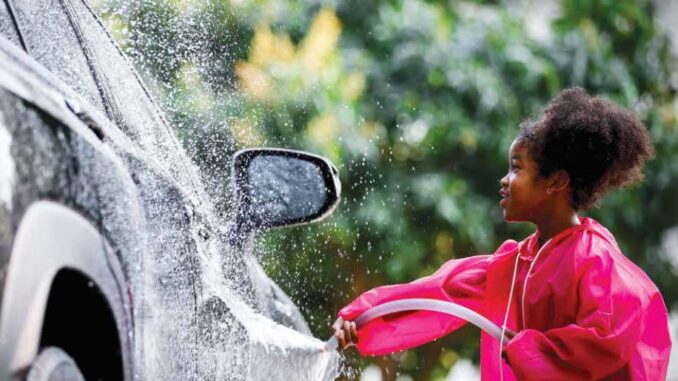
As winter dissolves into spring, a caravan of dirty cars emerge. Dreary months of snow and slush build up a film of salt, dirt and grime that becomes painfully obvious once the sun returns. Here’s how to wash away winter.
CLEANING
Snowy winters end up exposing a vehicle’s underbody to highly corrosive elements and left unattended they can impact your car’s longevity and value. Areas that experience winter precipitation typically use salt to make the roadways more passable. In some cities, two types of salt are mixed — magnesium chloride and sodium chloride — to create a kind of brine to be spread on key streets. It works as a melting agent, and the gritty consistency also helps tires adhere better to the road. But it also builds up underneath you, potentially causing huge problems down the road. Use a high-pressure sprayer at the neighborhood do-it-yourself car wash to dislodge and rinse away the buildup. For particularly stubborn salt, consider hiring a local detailer.
EVALUATE
Left unattended, salt deposits encourage rusting. This ends up acting as a slow-motion car accident, eventually wrecking everything from the body and chassis to your exhaust and braking systems. After the underbody of your car is cleaned, examine the vehicle for rust. Wheel wells, bumpers, and the fender area directly behind each wheel are the most susceptible because of the amount of salt-and-snow mix that collects there, according to American Automobile Association. Pay close attention as you examine each area, since even small spots of rust will continue to spread if left untreated. Sand down any area to bare metal, then paint the exposed spot with a corrosion-resistant primer. After drying, apply matching car paint and clear coat. Of course, if you don’t think you can adequately address the issue, stop by a local body shop for assistance.
SEALING
Salt saves countless lives on the highway, but it can lead to damaging rust that invades the bottom of your car. Take advantage of spring’s warmer temps to apply a protective sealant to the vehicle’s undercarriage. This will provide a first line of defense when snowy conditions inevitably return. As with rust remediation, you may want to discuss this sealant regimen with a local professional, since a number of important components are found underneath your car.


